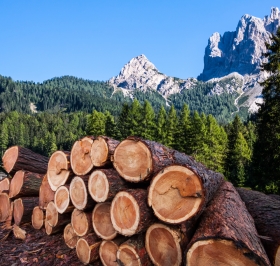Underestimating the Impacts of Old-Growth Logging

Ecologists may be underestimating the impact of logging in old-growth tropical forests by failing to account for subtleties in how different animal groups respond to the intensity of timber extraction, argues a paper published today in the journal Current Biology.
The study, led by Zuzana Burivalova of ETH Zurich, is based on a meta-analysis of 48 studies that evaluated the impact of selective logging on mammals, birds, amphibians, and invertebrates in tropical forests. Burivalova, together with co-authors Cagan Sekercioglu and Lian Pin Koh, found that biodiversity is inversely proportional to logging intensity.
"We should think about logging as a land use gradient rather than a single form of land use," Burivalova said during a talk last week at the annual meeting of the Association for Tropical Biology and Conservation (ATBC) in Cairns, Australia.
While the findings may seem intuitive, the study is the first to take a comprehensive look at the impacts of selective logging across animal groups and identify logging intensity as the most important factor in driving biodiversity loss. The researchers reached that conclusion after testing nearly three dozen other explantations, including proximity to roads, size of the area logged, distance to primary forest, and time since logging, among others.
"Selective logging has a smaller impact on tropical forest biodiversity than if we cut the forest down completely. This is part of the reason why many ecologists emphasize that selective logging is, at least on average, relatively benign," Burivalova told Mongabay.com. "However, as we have shown in this study, depending on how heavily the forest is logged, the impacts of logging are anything from benign to catastrophic. This is something that became apparent only as enough individual studies on logging have accumulated."
Previous research has generally concluded that selective logging has a limited impact because on average, selectively logged forests retain 99 percent species relative to old-growth forests. But that average number clouds the issue because it fails to account for changes within animal groups and the replacement of forest specialists by generalists.
Continue reading at, MONGABAY.COM.
Timber image via Shutterstock.